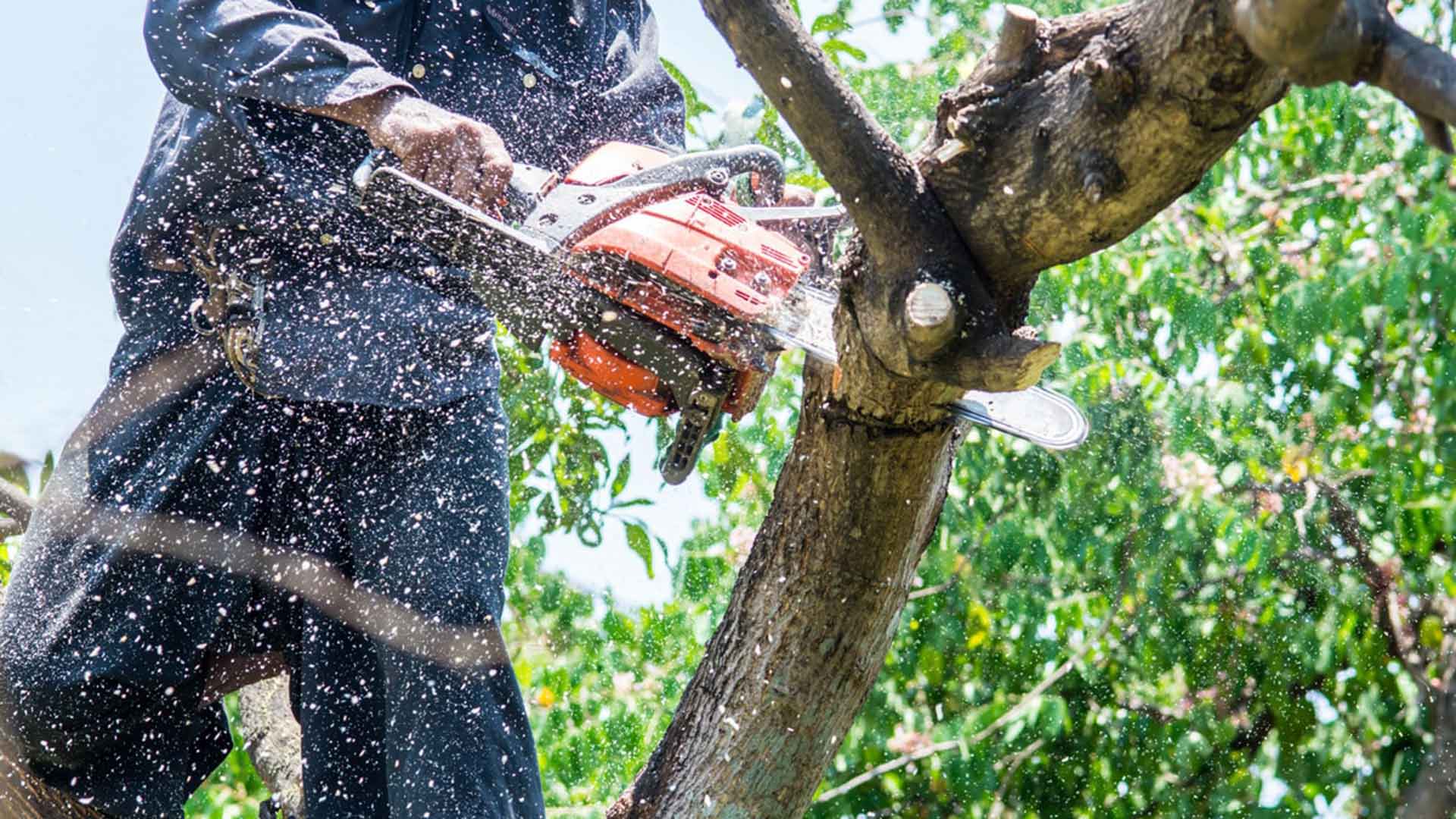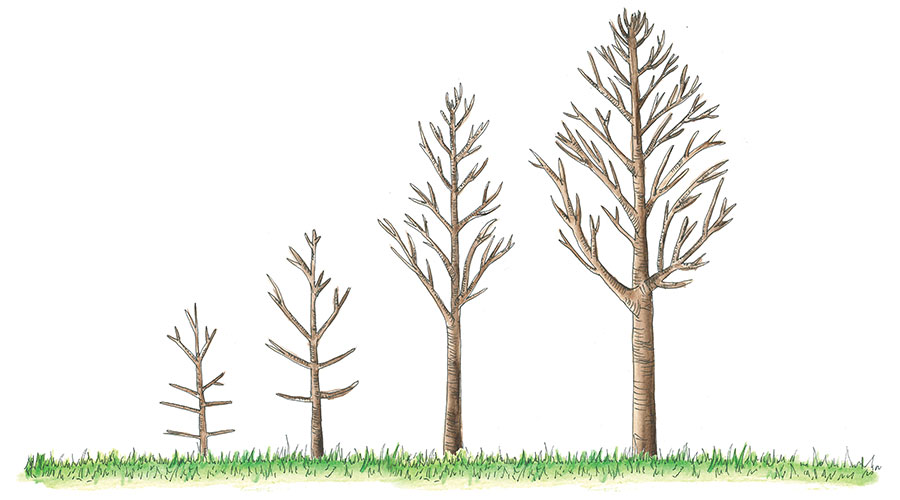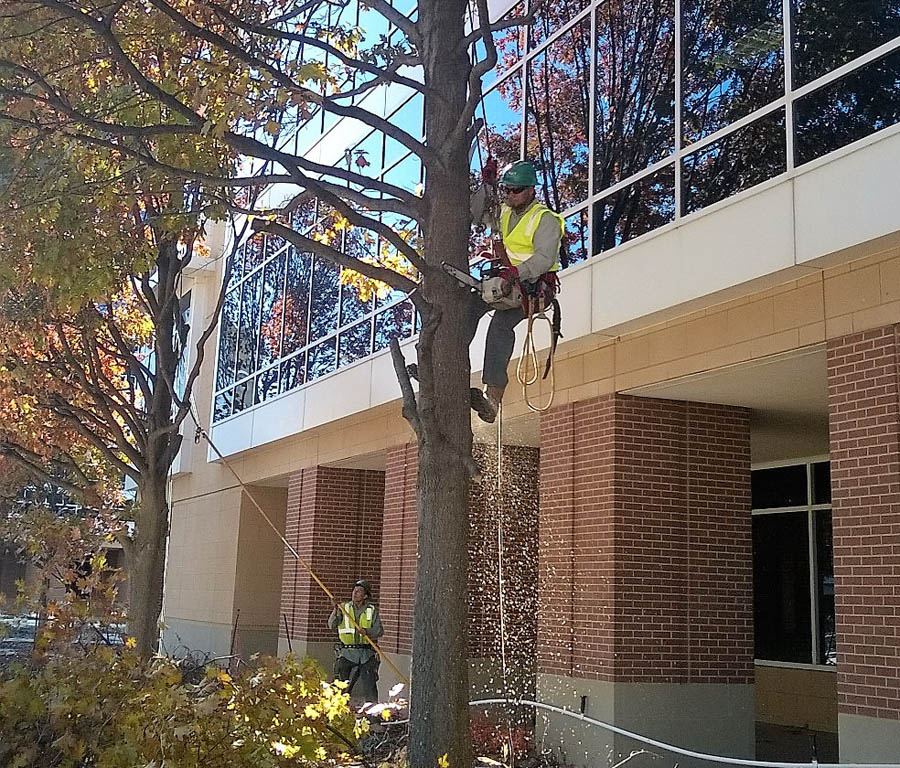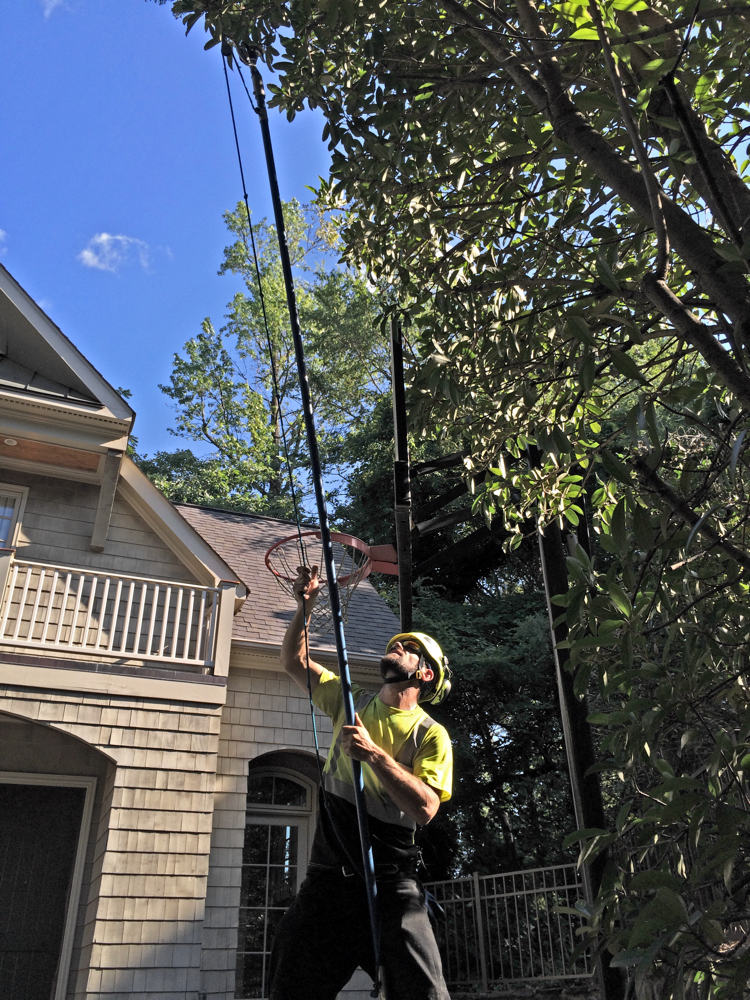Tree Care
Pruning / Trimming

The best thing you can do for your tree; or the worst, depending on who has the saw in their hands.
A chain saw in the wrong hands can quickly destroy what nature has taken many years to build. Saving a few dollars by hiring the guy down the street with a truck and chain saw can quickly become a costly and perhaps irreversible mistake. There are different reasons for pruning trees and different pruning techniques depending on objectives desired.
Formative Pruning
Pruning that is performed to help a young tree develop properly, encouraging strong and properly formed branches. Defective and competing branches with poor form are removed to allow the better formed branches to succeed.

Hazard Pruning

Pruning that removes potentially damaging branches often located over buildings, walkways and streets or wherever property damage or bodily injury might occur from a falling branch.
Although trees always pose some risk due to unforeseen or unmeasured characteristics, proper pruning can minimize or mitigate many of the risks that trees can present. Safety is always a concern whenever recreational activities such as picnicing, playing sports, camping or hiking near trees occurs. Trees offer welcome shade on a hot day and shelter from a summer thunderstorm. They also can be very hazardous on either type of day. Weather can and does play a significant role in tree failures. But dead and weak branches also fall to the ground on calm days. Being aware and staying clear of large trees whenever wind or heavy accumulations of ice or wet leaves are present is advised and easily understood. Less appreciated is the danger of falling branches when the winds are calm. Hazard pruning on a regular basis will make it less likely that branches are liable to be falling out of a tree.
Maintenance or Tree Preservation Pruning
This is tree health pruning performed on a regular basis to remove poor formed, dead or defective branches throughout the crowns of large or mature trees. This pruning will keep a tree healthy and will mitigate hazards that accompany tree ownership. Regular pruning will also remove branches that might might interfere with sidewalk or street right of ways or be too close to structures, utility wires or other improvements or landscape features. How often maintenance pruning is performed depends to some degree on the owners needs or desires and how close a tree might be to improvements.
Generally it is recommended that mature trees be pruned about every four or five years. Smaller trees, fruit bearing or ornamental trees might require pruning every year or two to maximize flower or fruit production or to maintain proper size and shape. Tree health pruning will help a tree conserve energy and spend that energy wisely. Trees need energy reserves during periods of drought, pest or disease infections. Overall the tree that has been routinely pruned will be healthier and look better, and be a contributing member of a landscape for a long time.
Call or email our office to schedule an appointment to have pruning done. If you have questions about when to prune or if your tree will benefit from pruning, a technician will be happy to visit with you, evaluate your trees and make recommendation to keep your trees healthy and looking their best.

Learn More

Please fill out the form below with any questions.